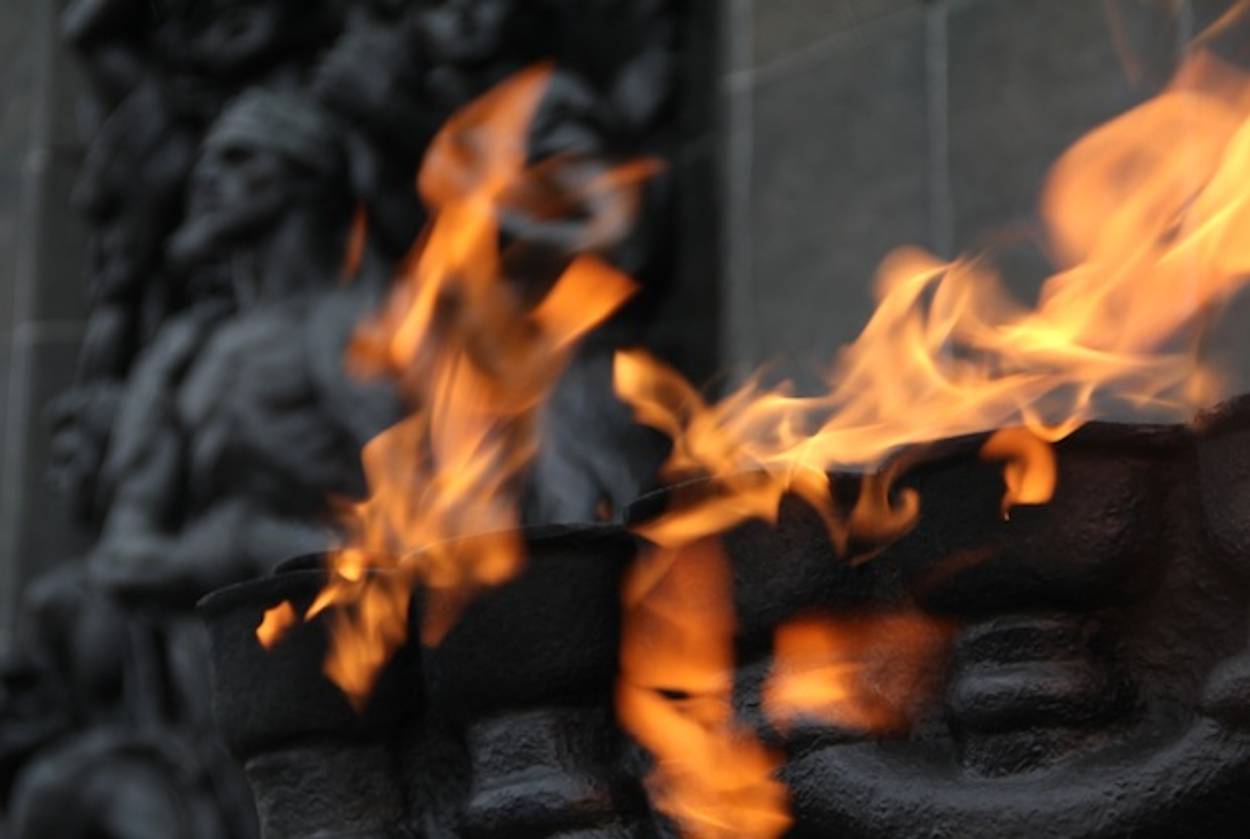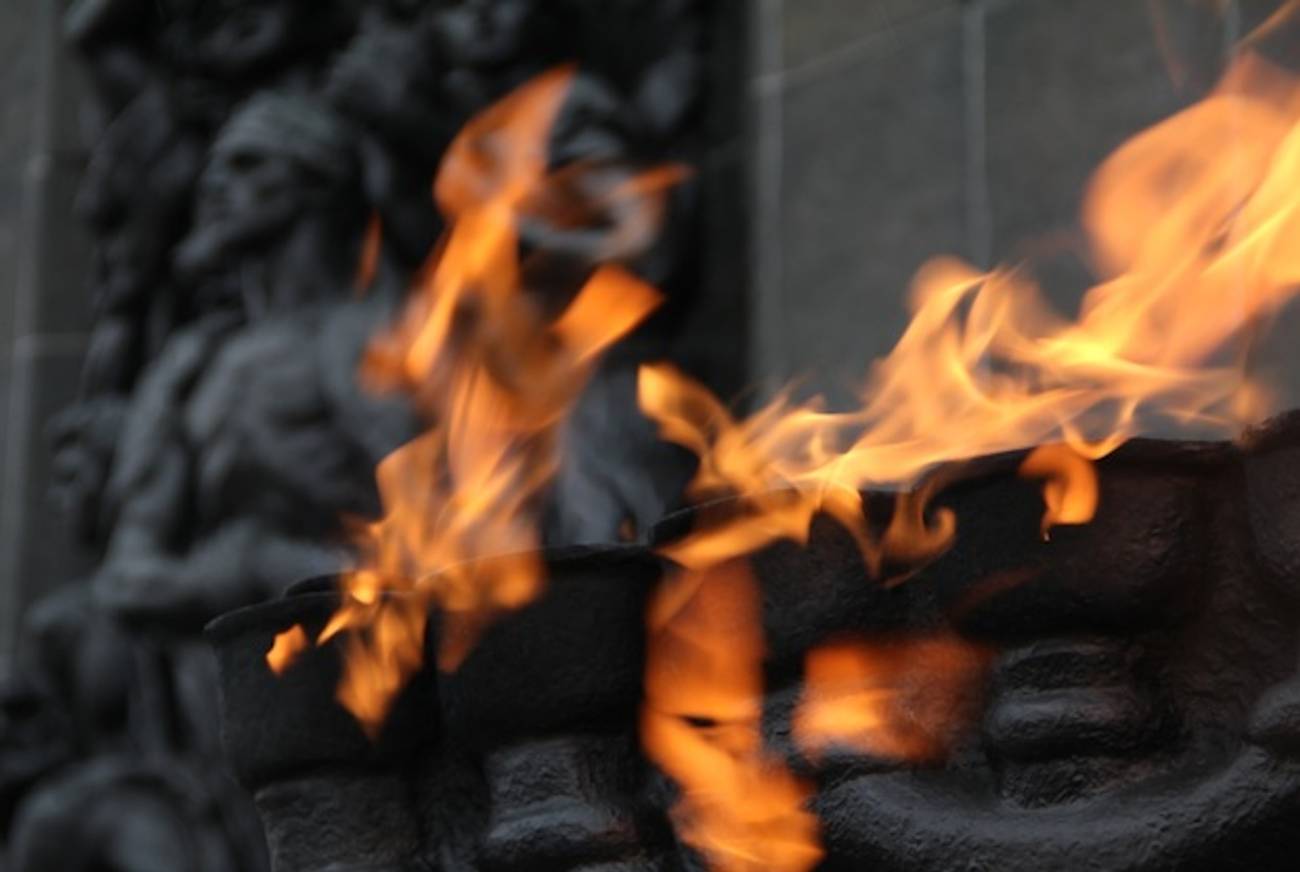Remembering the Warsaw Ghetto Uprising
Poland gives tribute on the 70th anniversary




After a week of warm April weather, sunny afternoons and calm evenings, Friday morning in Warsaw was grey. An easily imaginable and heavy Polish grey: cold, windy, and threatening rain.
Like all anniversaries, the 70th anniversary of the Warsaw Ghetto Uprising represented the interaction between history and the public marking of time. There were ceremonial sirens, church bells, military drums, and symbolic rifle fire, all of which echoed through the open plaza between Nathan Rapoport’s iconic monument to the ghetto fighters and the newly-minted Museum of the History of Polish Jews. The silences were tense and even the weather had conspired to project solemness.
Warsaw Mayor Hanna Gronkiewicz-Waltz spoke of the Jewish fighters as people who may not have all been from Warsaw, but became citizens of Warsaw when they banded together. Polish President Bronislaw Komorowski spoke of the Jewish fighters as members of the Jewish nation who were also Poles — two nations living together on Polish soul — and placed their resistance between the Polish resistances against the Nazis in September 1939 and the Warsaw Uprising of August 1944; Jews and Poles fought a common enemy during the war, as they had against the Czarists.
Rabbi Shai Piron, Israel’s Education Minister and Yair Lapid’s #2, spoke about the 1795 Polish census that listed the Jewish population at 6,700. He then cited the post-war figure of 7,800 Jews. It was a poignant construction because it was between those two points that the zenith of Jewish population had reached 368,000 citizens in Warsaw and roughly 3.5 million in Poland. Before reciting Bialik, Piron also spoke of the 800-year history of Polish Jewry, noting its diversity: Zionists, anti-Zionists, Communists, atheists; distinctions that had mattered to everyone but the Nazis.
By this point, the ceremony had slowed to double translation speed, Piron’s Hebrew was relayed to the crowd in Polish and then translated again into English. It was devastating in three languages. He told the crowd to close its eyes and image what Poland would be like if the Jewish doctors, intellectuals, and artists had lived to see the day. He also paid tribute to the nearly 7,000 Poles who have been designated as Righteous Gentiles, the largest number from any country.
The most stirring moment was a speech delivered by Simha Rotem, one of the last three remaining survivors of the Warsaw Ghetto Uprising. He recalled traveling through the sewers to find Jews in the ghetto and at one late point wondering, Am I the last Jew in the Ghetto?. Rotem, 88, continued:
“We knew that the end would be the same for everyone. The thought of waging an uprising was dictated by our determination. We wanted to choose the kind of death we would die. But to this day I have doubts as to whether we had the right to carry out the uprising and shorten the lives of people by a day, a week, or two weeks. No one gave us that right and I have to live with my doubts.”
He added that there were no words to describe the ghetto’s isolation. “We were alone and could only count on ourselves.”
Rotem also spoke of the solidarity within the ghetto. Despite the disease and famine that took 100,000 lives, a fifth of the population, there was community education, self-help, and culture. The children were small and risked their lives to slip out and help their families; those same children were sent to Treblinka. He spoke of the Poles outside the walls who were also alone, some of whom risked everything to help. In a jarring admission, he asked aloud whether he thought he could have done the same.
Rotem, who moved to Israel and had two sons, also didn’t glaze over the unpleasant parts of the relationship between Jews and Poles during the war. After ten days of fighting the Germans, he said, some 90% of the Jewish fighters were still alive. But when they called on the Polish Home Army for help, no one answered. Poles whose lives were not at risk, and had nothing to gain, still condemned Jews to death by pointing them out on the streets or turning them in. He had no interest in understanding those people, or understanding those who committed pogroms against the Jews after the war’s end. The solace was that, even if the world hasn’t learned the lessons yet, its future generations could come to Warsaw and learn about what happened here.
As it started to rain, the Polish President honored Rotem with the Grand Cross of the Order of the Rebirth of Poland. The Chief Rabbi of Poland chanted Psalm 130, El Male Rachamim was sung, and wreaths were laid as the crowd dispersed and the invited dignitaries entered the museum.
Adam Chandler was previously a staff writer at Tablet. His work has appeared in the New York Times, the Wall Street Journal, the Atlantic, Slate, Esquire, New York, and elsewhere. He tweets @allmychandler.